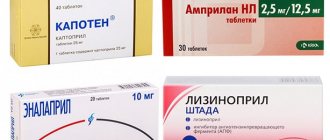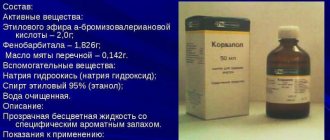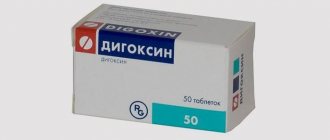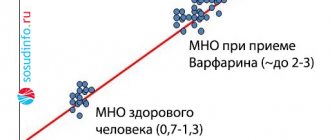Intravenous administration of magnesium
For high blood pressure, which often occurs in conditions of a hypertensive crisis, myocardial infarction or arrhythmia, a magnesium injection is given.
Unlike intramuscular injection, the medicine acts instantly when it enters the cardiovascular system. The dosage should be prescribed by a specialist; this is due to the therapeutic effect, as well as the concentration of ions of the active substance in the human body. Patients are given an injection of 5 to 20 ml of a 25% solution. The drug itself should enter the blood slowly over 5-7 minutes, so as not to cause complications; a dropper is usually used.
Problems can appear in the form of dizziness, profuse sweating, heavy breathing, or a feeling of increased body temperature.
If such effects occur, the rate of delivery of the drug should be reduced. Blood pressure will drop instantly, low levels will remain for half an hour. This will make it possible to remove the patient from a difficult situation and deliver him to the hospital, where further medical care will be provided.
Video on the topic
As we have already said, in some cases Magnesium sulfate is administered intramuscularly. How effective is this method of drug administration for hypertension? Answer in the video:
So, Magnesia today remains a very popular drug for the treatment of many diseases. There is no need to worry about using its solution; you just need to carefully monitor changes in your well-being. If the condition worsens, you cannot hide it, you need to consult a doctor. But you shouldn’t refuse treatment with Magnesia without good reason, because it really helps with many diseases, and gives pregnant women the opportunity to avoid premature birth.
The information on the MyMedNews.ru website is for reference and general information, collected from publicly available sources and cannot serve as a basis for making a decision on the use of medications in the course of treatment.
MyMedNews.ru
And we also have
Meteospasmil and Espumisan: comparison of drugs
Operating principle
The composition of the Magnesia solution administered intravenously to patients is very simple. It includes 25% magnesium sulfate, the rest of the injectable dose is water. The active substance does not require the introduction of any other auxiliary agents into the composition of the medicine. The degree and type of effect on the body is determined by the method of administration and the dose of the drug received by the patient.
Powder for preparing solution
The medicinal effect is based on the ability of calcium antagonists, which include magnesium sulfate, to block slow calcium channels. As a result of a decrease in the amount of calcium ions in the cells of the heart muscle and in the muscles of the walls of blood vessels, the arteries dilate.
Magnesium sulfate, in addition, also reduces the amount of neurotransmitters in the nervous system, inhibiting its activity, due to this it has a calming effect. The drug reduces the activity of cardiomyocytes, restoring ionic balance in cells and normalizing the permeability of cell membranes, which has a positive effect on heart rate.
But, nevertheless, magnesia is most often used as a means that can effectively reduce too high blood pressure. For these purposes, magnesium is administered intravenously, in the form of a dropper, or intramuscularly, in the form of an injection.
Magnesia is one of the drugs that reduces the number of heart contractions.
Benefits of Magnesia
The drug has several advantages. The first and most important thing is efficiency. Magnesia quickly copes with the task and in almost all cases gives positive results. The second thing you should pay attention to is performance.
Magnesia is one of the fast-acting remedies for hypertensive crisis to reduce blood pressure
The third and important factor is the low price. Despite the fact that Magnesia is a budget option, it is in no way inferior to expensive medicines. The medicine has one active substance - magnesium salt. Magnesia does not contain any additional components. This can be considered an advantage, since when used correctly, there is virtually no risk of side effects and allergic reactions.
Dosage and route of administration
The method of administration and how much magnesium to inject for high blood pressure is determined by an experienced doctor, based on an objective picture of the course of the disease and the characteristics of the patient’s body. The optimal options for use are intravenous drips, injections, and intramuscular injections. Intravenous administration causes a rapid onset of a therapeutic effect, the duration of which is short (25-40 minutes). When injected into the buttock or thigh, the effect of the drug begins within an hour and has a prolonged effect.
Drip (jet) administration is prescribed in a hospital setting, under the vigilant supervision of doctors, when the need to urgently lower blood pressure has passed, and there is no threat of stroke or heart attack.
Intramuscular magnesium is quite painful for patients to tolerate.
Intramuscularly
Intramuscular magnesium from pressure is quite painful for patients. To reduce pain, the solution is administered together with Lidocaine. This manipulation can be carried out with the simultaneous administration of both drugs. Medicines are used in equal proportions. With this option, the action of the anesthetic neutralizes the pain caused by magnesium sulfate. Administration can be carried out sequentially. Then the effect of the first administered Lidocaine precedes the feeling of pain caused by the next injection.
How to inject magnesium intramuscularly under pressure is determined by the doctor, based on the sensations and the level of the patient’s pain threshold. A magnesium injection at high blood pressure is performed in a slow mode - 1 ml. /1 min. The injection must be administered by a qualified specialist. Contact of the drug subcutaneously, especially on the fat layer, can provoke the development of an abscess. Often, with incorrect, rapid administration, dense painful infiltrates form at the injection site.
The effect of the drug begins after 40 minutes. after the manipulation. Before administering the medicine, the puncture area is treated with an antiseptic, usually the upper outer quadrant of the gluteal muscle. Since the expected hypotensive effect has to wait a long time, this procedure is considered ineffective when the tonometer readings are critical and there is a risk of cardiac and cerebral hemorrhages.
Intravenous injections
Magnesia is administered intravenously at high blood pressure in a diluted form together with 5% glucose, saline. solution (NaCl). The patient must be provided with a horizontal position. A tourniquet is applied to the limb, after filling the vein, the injection site is disinfected, a puncture is made, followed by injection.
In case of hypertensive crisis, this method is indicated
The effect of the drug begins immediately after the start of administration; due to a sharp decrease in blood pressure, feelings of dizziness, nausea, weakness, and hyperhidrosis may occur. It is assumed that the manipulation will be carried out in an extremely slow mode, with constant monitoring of the patient’s condition. This method is indicated for hypertensive crisis.
The speed of action of the medicine is equal to the speed of its elimination, so its effect is limited in time. Used as an emergency measure to reduce blood pressure with the aim of transporting to a medical facility.
Is it possible to inject Magnesia intramuscularly?
This drug is a vasodilator and has a tremendous amount of positive therapeutic effects. But is it possible to take magnesium intramuscularly?
The drug can be used either orally or administered by injection. Experts recommend doing this intramuscularly.
Magnesium sulfate in ampoules
The product is available in the form of a regular injection solution and in the form of a fine powder from which a suspension is prepared. The latter can be bought in packaging. Its weight varies: 10 g, 20 g, 25 g and 50 g. But ampoules with the solution are produced in the following volumes: 5 ml, 10 ml, 20 ml and 30 ml.
The medicine also has another name - Magnesium sulfate. The concentration of the active substance can be 20% or 25%. Regarding the question of whether Magnesium sulfate can be administered intramuscularly, the answer is positive.
However, we must not forget that injections of this substance are quite painful, so some experts prefer to use intravenous administration. To significantly reduce pain, you need to mix the drug with Novocaine. The doctor selects the dose individually, depending on the indications.
How does magnesium injection work and what effect can you expect?
After introducing Magnesia into a vein, the positive therapeutic effect appears within 1-2 minutes. Depending on the disease for which the use of this drug was indicated, the patient experiences appropriate relief. The molecules of the drug immediately mix with the flow of venous blood and in a matter of seconds spread throughout the body, saturating the epithelial tissues of vital organs and systems.
The spectrum of action of Magnesia is due to its following influence on the patient’s health and pharmacological properties:
- vasodilator (manifests itself in a sharp decrease in blood pressure, bronchial lumens expand, blood flow in the main vessels is stabilized);
- antispasmodic (due to this therapeutic property of the drug, an analgesic effect is achieved, which is especially important for inflammatory tissue lesions);
- tocolytic (provides complete relaxation of the smooth muscle fibers of the uterus, which is necessary to stabilize labor in women in the last stage of pregnancy);
- antiarrhythmic with regulation of the intensity of contraction of the heart muscle;
- a diuretic with a weakly expressed effect (for a more accelerated outflow of excess fluid from the body, it is recommended to use Magnesia in combination with other diuretic drugs);
- a sedative, which gently soothes irritated nerve endings in any part of the body;
- choleretic and laxative (this property affects the functioning of the entire digestive system, appetite improves, food is absorbed faster, metabolism accelerates).
Large dosages of Magnesia, or its intravenous administration over a long period of time, have a hypnotic and narcotic effect on humans. In general, the drug can rightfully be called an effective remedy for most diseases. Intravenous injections are used as the main medicine for the pathology identified in the patient, or are included in the course of general therapy.
How to introduce magnesium into the body
Most experts are confident that introducing the drug into the body through a dropper is not the best way to lower blood pressure, especially during a hypertensive crisis. If the substance is dripped onto the patient, he will receive more harm than a therapeutic effect. It is for this reason that magnesium should be administered intramuscularly or intravenously.
Attention! It is necessary to use injections with Magnesia only with the permission of the attending physician. It is unacceptable for this procedure to be carried out independently by a person who experiences surges in blood pressure.
An injection for high blood pressure should be given by a qualified specialist.
Features of intramuscular administration
To lower blood pressure, use 1 ampoule of a 10% solution (10 ml). Since the intramuscular form of Magnesia injection is very painful, the drug is usually mixed with Novocaine or Lidocaine. The drugs are combined in a syringe or an anesthetic injection is given immediately after the administration of magnesium.
The injection is carried out following some recommendations:
- The patient is positioned on his side or stomach.
- The area of skin where the injection is given is pre-treated with alcohol. The syringe needle is inserted into the upper region of the buttock.
- The drug is administered carefully and slowly. The entire process should take about 2 minutes.
- The needle is inserted at an angle of 90 degrees, making sure that it is located as deep as possible in the soft tissues.
Important! Since elderly people often experience a decrease in kidney function, elderly patients need to reduce the dosage of the drug. . It is worth noting that the intramuscular method of administering magnesium to the body at this stage of medical development is considered ineffective compared to intravenous injections
This method fell into the background for several reasons:
It is worth noting that the intramuscular method of administering magnesium to the body at this stage of medical development is considered ineffective in comparison with intravenous injections. This method fell into the background for several reasons:
- The drug administered intramuscularly is absorbed quite slowly. In situations where minutes are counting and an emergency antihypertensive effect is needed, such a delay can cost the patient his life.
- Such injections are quite painful, which can further aggravate the patient’s well-being.
- The dosage through such administration is much more difficult to regulate.
Features of intravenous administration
By injecting magnesium into a vein, the hypotensive effect is almost immediate, since the drug acts very quickly. The drug magnesia is prescribed for heart attack, arrhythmia, and angina pectoris. Typically, these conditions cause increased blood pressure.
The optimal dose of the drug is on average from 5 to 20 ml of a 25% magnesium solution. You need to inject the product in a stream and as slowly as possible - the whole process should take about 5-7 minutes.
If the drug is administered quickly, the following complications may occur:
- dizziness;
- intense sweating;
- feeling of heat in the body;
- breathing problems.
If the patient experiences one or more of these symptoms, the rate of administration of the drug should be reduced. The medicine instantly reduces blood pressure to acceptable levels, maintaining the effect for half an hour. During this period, the patient must be urgently hospitalized in the cardiology department. There, the medical staff makes a decision on further treatment tactics.
Optimal dosage
For intravenous and intramuscular injections, it will be enough to use a 20% solution in an amount of 200 ml. This dose is considered the maximum; the amount of medication required for each individual patient is prescribed by the attending physician.
Properties of the drug
Magnesium sulfate (magnesium 25%) administered intramuscularly to reduce blood pressure has the following characteristics:
- causes a diuretic effect,
- dilates the coronary arteries,
- reduces vascular spasm,
- normalizes heart rhythm,
- relieves an excited state.
“Hot shot” of magnesium sulfate
For injections, a 25% solution of magnesia is used in ampoules of 10 ml or 5 ml. For intramuscular injection, the magnesium ampoule solution should not be further diluted.
Intramuscular administration of magnesium is quite difficult for humans to tolerate, as it is accompanied by severe pain. Rapid administration of the medication may trigger seizures. When administered intramuscularly, the drug begins to affect the body after 50-60 minutes, the effect lasts 3-4 hours.
For the injection, a long and thin needle must be used. Before the injection, the ampoule is slightly warmed up, and the injection site is treated with a disinfectant. The needle is inserted with a rapid movement until it stops, and then without haste, the substance is injected very slowly and smoothly
It is important not to allow magnesium sulfate to stagnate in muscle tissue.
Pain relief can be provided by parallel use of novocaine. To improve well-being, the patient should not get up suddenly; it is recommended to lie down for 10-15 minutes after the injection.
If prolonged hypertension is observed during pregnancy, and crises often occur, then doctors prescribe magnesium sulfate injections for intramuscular injection.
Magnesia should not be injected in the early stages of pregnancy, since all systems and organs of the fetus are formed. Usually during this period doctors prescribe papaverine, but-shpu.
Also, during pregnancy, it is prohibited to administer the drug immediately before childbirth.
When dosing magnesium during pregnancy, it is important to take into account the characteristics of the gestation process, the state of the expectant mother’s body, and the presence of chronic diseases. The usual single dose of the substance during pregnancy is 20 ml of 25% magnesium sulfate.
Description of the drug
Magnesia has a hypotensive, vasodilator, pronounced antispasmodic, anticonvulsant, antiarrhythmic, laxative and sedative effect, in addition, its intake has a weak diuretic effect and stimulates the production of bile.
If you use magnesia in doses exceeding those recommended in the instructions, then the hypnotic and narcotic effect is pronounced, and the activity of the nervous system is noticeably inhibited.
Magnesium sulfate solution
The drug is most often administered intravenously using a drip; this method is usually used by emergency medical technicians who arrive on call. Intramuscular administration of Magnesia is also allowed, but experts do not recommend such use, since in this case side effects are more likely to occur.
In addition, the injections are very painful. To relieve pain, Magnesia with Novocaine is used. However, intramuscular injections are usually used at home. The course of treatment is a maximum of 2-3 weeks. Despite its very broad spectrum of action, Magnesia is most often used to normalize high blood pressure.
Intramuscular injections may be prescribed for the following health problems:
- gestosis accompanied by convulsions;
- epilepsy attacks;
- hypomagnesemia;
- urinary retention.
The instructions for use accompanying the drug Magnesia sulfate note the effectiveness of injections in the treatment of poisoning with salts of various heavy metals: barium, lead, arsenic or mercury.
There is a fairly large list of contraindications:
- acute appendicitis;
- rectal bleeding;
- acute renal failure;
- intestinal obstruction;
- bradycardia;
- breathing problems;
- severe dehydration of the body;
- hypotension;
- disruption of the process of conducting impulses from the atria to the ventricles;
- the first trimester of pregnancy, as well as less than two hours before birth.
Since Magnesia has quite serious side effects, injections can only be given as prescribed by a doctor, strictly observing the dosage.
Side effects and contraindications
The drug, with all the advantages of its use as an antihypertensive drug, has many side effects. There is also a relatively large list of contraindications that make the use of Magnesia solution an event dangerous to health and life.
Magnesia cannot be used if the patient has low blood pressure - it is life-threatening.
But even with high blood pressure, magnesium into a vein is contraindicated if the patient’s body is dehydrated or the breathing process is difficult. Internal bleeding, renal failure, and intestinal obstruction are also contraindications for the use of this drug.
Magnesia is not prescribed at the beginning of pregnancy and before childbirth, during breastfeeding. It is also undesirable to use the medicine if the patient suffers from cholelithiasis, appendicitis, or during an exacerbation of chronic diseases.
Possible side effects are sinus rhythm disturbance, double vision, headache.
Weakness, vomiting, speech disorders and other symptoms characteristic of a person with a depressed central nervous system are also possible.
Often taking the drug causes an instant rush of blood to the skin of the face, which frightens many patients. However, this is the most harmless side effect of the medicine, and you should not be afraid of it.
The formation of infiltrates from the use of magnesium is a common phenomenon that responds well to treatment.
What are the benefits of Magnesia?
The effectiveness of the drug has been proven by numerous clinical studies. The drug is used in various branches of medicine - cardiology, gastroenterology, gynecology, neurology. Due to its powerful vasodilating effect, the drug is very often used for complex therapy of cardiovascular pathologies.
Magnesia is a compound of magnesium and sulfuric acid
In addition, Magnesia has a lot of beneficial properties and has a good healing effect. The main objectives of the medication:
- Removing harmful substances from the body;
- Normalization of brain cell function;
- Relieving nervous tension;
- Elimination of intestinal problems;
- Relieving spasm of the gallbladder.
Magnesia has antispasmodic, choleretic, hypotensive and anticonvulsant effects. The active substance of the drug is well absorbed into the mucous membranes and enters the general bloodstream. The effect of the medicine begins 30-60 minutes after administration. And the therapeutic effect lasts for 4-6 hours.
Part of the drug is excreted through the kidneys, resulting in a mild diuretic effect. The powder form is most often used in mild cases, and to relieve attacks and eliminate severe conditions, Magnesia is administered intravenously or intramuscularly. Sometimes the drug is used as compresses for bruises and other injuries. In this case, Magnesia works as a pain reliever.
Note. The medicine has several other forms of release, intended specifically for athletes - balls and powder. Used to dry hands before training. These release forms are not prescribed for the treatment of diseases.
What should you not combine magnesium sulfate with?
Magnesia is incompatible with:
- alcohol;
- calcium supplements;
- barium salts;
- clindamycin phosphate;
- carbonates;
- tartrates;
- salicylates;
- procaine;
- hydrocortisone succinate and some other substances.
When substances from the list above are combined with magnesium, a precipitate is formed.
When taken simultaneously with anticonvulsants, antiparkinsonians, hypnotics or psychotropic drugs, magnesium enhances their effect. The likelihood of respiratory depression increases when used together with narcotic analgesics, barbiturates, and antihypertensive drugs. Nifedipine and muscle relaxants enhance the ability of magnesium to provoke neuromuscular blockade.
The effect of magnesia weakens the intravenous administration of potassium salts, so they are used as an antidote for overdose, and ciprofloxacin reduces its absorption (absorption).
Effects of magnesium on the body
With a lack of magnesium in the body, hypertension develops. Medicines containing this substance improve the patient’s general condition, relieve symptoms of the disease and lower blood pressure. Magnesium also effectively stops the hypertensive crisis.
In case of illness, magnesium relieves vascular spasms, relaxes muscles, calms the nervous system, lowers blood pressure, and normalizes the frequency and strength of heart contractions. Magnesium preparations do not allow the development of atherosclerosis, the formation of blood clots and cholesterol plaques in blood vessels, thereby preventing heart attack and stroke.
If the disease increases blood pressure, you need to take care not only of taking medications, but also of proper nutrition. It is necessary to regularly eat foods rich in magnesium and potassium.
In the diet for arterial hypertension, it is necessary to include foods rich in magnesium, such as:
- Legumes;
- Nuts;
- Rye bread;
- Beetroot;
- Buckwheat, wheat groats and bran;
- Milk and cottage cheese;
- Chocolate and cocoa;
- Greenery.
Patients with hypertension are advised to avoid sweet, salty, smoked and fatty foods as much as possible. Can’t resist consuming spices, preservatives, marinades, mayonnaise.
Medicines that have positive reviews include drugs such as Magnerot, Magnesium B6, Magvit.
Other indications for use
The drug is administered not only when necessary to reduce arterial blood pressure. In medical institutions, the drug is administered intravenously for the following conditions:
- pulmonary edema;
- muscle cramps;
- epilepsy;
- arrhythmia on ECG;
- severe neurological pathology;
- magnesium deficiency in the body;
- encephalopathy;
- severe forms of toxicosis or convulsive syndrome in pregnant women.
Emergency care for disorders in pregnant women is especially important, since there is a risk to the health of not only the expectant mother, but also the life of the child.
What is the best way to use magnesium for pressure?
To lower blood pressure, magnesium sulfate is best administered intravenously or as a stream, rather than intramuscularly.
Gradual intravenous infusion is the most optimal method of magnesium therapy
Oral administration during a hypertensive crisis does not justify itself. Diluted magnesia powder, drunk orally, gives a choleretic, laxative, and antispasmodic effect. This method is used to eliminate stagnation of bile, cleanse the intestines, remove toxins and poisons, relieve spasms and abdominal pain.
It is best to administer a magnesium sulfate solution through an IV. A slow, gradual increase in the concentration of the drug in the blood gives the desired therapeutic effect without the development of unwanted side symptoms. Emergency doctors more often practice intravenous injection of the drug, but clearly control its speed and also focus on the patient’s sensations.
Magnesia for hypertension
Magnesia for high blood pressure has a symptomatic effect without achieving a therapeutic effect and eliminating the causes of the development of pathological processes.
The purpose of using the drug for hypertension is to provide emergency assistance to a person undergoing a hypertensive crisis by quickly reducing blood pressure. The effect of the medicine causes an improvement in well-being and minimizes the threat of developing dangerous complications (acute heart failure, heart attack, stroke).
For high blood pressure, magnesium tablets are not effective. Intramuscular injections or intravenous infusion of the drug are required, leading to:
- lowering blood pressure in a short period of time;
- normalization of a person’s psycho-emotional state;
- expansion of the lumen of the coronary arteries, relaxation of vascular smooth muscles, relieving spasms;
- normalization of heart rhythm;
- decreased platelet aggregation;
- minimizing the threat of developing seizures, pulmonary edema, thrombosis, atherosclerotic processes;
- removing toxins from the body.
After the injection, you should immediately seek qualified medical help to prevent the recurrence of the pathological condition.
Side effects
It should be remembered that Magnesia is far from a harmless drug that can be used uncontrolled. This drug must be used as directed and under the supervision of a physician.
Even with proper use of magnesium sulfate, the following undesirable effects may occur:
- allergic reactions;
- slow speech;
- severe weakness;
- redness of the facial skin;
- cramping abdominal pain;
- sudden drowsiness, deep sleep;
- double vision;
- dizziness;
- diarrhea;
- nausea, vomiting;
- feeling of heat in the breast area;
- strong thirst;
- respiratory depression with the appearance of shortness of breath.
If the patient has a history of heart or respiratory disease, magnesium sulfate can cause respiratory failure, cardiac arrest, and even death.
In some people, instead of a calming effect, the drug causes hyperactivity and anxiety. And if the dose is exceeded, a strong sedative effect can provoke a condition very similar to anesthesia.
When administering intramuscularly, you must be extremely careful; if the solution accidentally gets into the adipose tissue, an abscess may form. That is why a physician must inject the drug strictly into the muscle of the upper outer quadrant of the buttock.
Intravenous magnesium injections
Intravenous administration of the drug is carried out exclusively in a hospital setting and with further medical supervision. With this method of administration, magnesium sulfate cannot be administered in its pure form; it is diluted with glucose or novocaine.
The hospital uses IVs. The patient's condition must be constantly monitored by medical personnel. With this administration, improvement occurs within 30 minutes.
Magnesia and pressure when it is advisable to use
Today in pharmacies you can buy magnesia in the form of ampoules with solution and in powder form. For people who suffer from weather dependence and frequent attacks of hypertension, it is possible to use a powdered type of drug, but it should be taken strictly in the proportions recommended by the attending physician.
Magnesia for high blood pressure is often introduced into the body through droppers or injections, has good reviews from doctors and has an antiarrhythmic effect. It is Magnesium sulfate that must be administered in the following cases:
- vasoconstriction;
- the need to relieve nervous stress;
- rapid heartbeat;
- the need to stimulate bile production.
Some of the indications for the use of magnesium injections are manifestations of epilepsy, tachycardia, seizures, problems with urination, hypertensive crisis and cerebral edema.
The dose of the drug is calculated by the attending physician based on the patient’s condition, and an overdose of the drug can cause side effects, including: drowsiness, weakness, decreased respiratory activity.
general description
One of the proven and well-known drugs that is used for blood pressure is Magnesia injections. The drug is used in extreme cases, if the pressure has risen too much and there is a risk of a hypertensive crisis. The drug also helps eliminate the symptoms associated with high blood pressure and prevent heart attack, acute heart failure and stroke. The effect of the drug is short-term: about 4 hours after administration.
Why magnesium sulfate? The fact is that an insufficient amount of magnesium in the presence of hypertension leads to a hypertensive crisis. Therefore, this particular drug helps in 99.9% of cases to quickly reduce blood pressure.
The drug has an extremely simple composition - magnesium salt of sulfuric acid. No additional ingredients are added to the medicine.
The medicine is available in three forms:
- powder for preparing suspensions;
- pills;
- injection.
How to give an injection correctly
Hypertension must be treated comprehensively and in a timely manner. If this rule is neglected, a hypertensive crisis may develop. In this case, blood pressure rises to 180-200 by 120-140 mmHg. In a state of crisis, Magnesia may be prescribed intramuscularly.
The drug has a diuretic, vasodilator, antiarrhythmic, tocolytic, anticonvulsant and sedative effect. When administered orally, the powder additionally has a laxative and choleretic effect.
The product is available in the form of a solution for injection. Magnesia is also found in powder form. The price of the drug is about 37-40 rubles for 10 ampoules (10 ml). The medicine is available without a prescription.
The principle of action of the medicine
Before you understand the principle of action of the medicine, you need to distinguish between concepts such as intracranial and blood pressure. Intracranial pressure (ICP) is an indicator that characterizes the force of influence of cerebrospinal fluid on brain cells.
Blood pressure is a measure that reflects the force that blood exerts on the walls of blood vessels. Magnesia is practically not used to reduce intracranial pressure. It is usually prescribed to hypertensive patients, that is, people suffering from high blood pressure.
Magnesium Sulfate (active component) has the following therapeutic effects:
- Sedative.
- Antispasmodic.
- Hypotensive.
- Antiarrhythmic.
- Anticonvulsant.
- Tocolytic (relaxation of the smooth muscles of the uterus). Moreover, the medication can be freely used by hypertensive patients who have an ovarian cyst.
- Hypnotic.
If you take the powder internally, you can get rid of diarrhea. Also, when taken orally, the medicine has a pronounced choleretic effect. Oral Magnesium Sulfate is prescribed for severe poisoning with salts of heavy metals.
Instructions for use of the drug
In what cases is the medication used? As noted above, Magnesia is used for high blood pressure. This is especially true in cases where a hypertensive crisis develops against the background of arterial hypertension.
Indications for use also include ventricular tachycardia, hypertensive crisis with cerebral edema, urinary retention, and concussion. The use of the drug is also justified for hypomagnesemia, tetany, encephalopathy, epileptic seizures, poisoning (barium chloride or heavy metal salts), bronchial asthma.
How to inject Magnesia? The drug can be administered either intramuscularly or intravenously. Many hypertensive patients prefer to inject the medicine not into the gluteal muscle, but into the thigh.
In acute arterial hypertension, the optimal dose is 5-20 ml. The frequency of injections is 1 time per day. The dosage will depend on the severity of the crisis.
If necessary, it can be adjusted by the attending physician.
If powder is used, then you need to mix 20-30 grams of Magnesia and 100 ml of water. The resulting suspension should be taken before bed or 30-40 minutes before meals. For constipation, you can do an enema from the suspension.
Instructions for use of magnesia
Each form of the drug has its own characteristics when used. This is specified in the instructions for use. Doctors prescribe a course of treatment and dose depending on the problem:
- as a laxative for constipation – 30 g of powder per 100 ml of water, drink at night;
- magnesium sulfate for hypertensive crisis - intravenous, intramuscular administration of the drug - dosage up to 20 ml;
- as a choleretic agent - drink a suspension of 20 g of powder per 100 ml of water three times a day before meals.
Instructions for use in ampoules
According to experts, you should not take the medicine for a long time. An injection of magnesium for pressure relieves symptoms, and further treatment is prescribed by the doctor using other drugs. For administration, a solution with a concentration of 25% is most often used. The duration of the procedure is up to 40 minutes. According to the instructions, the dosage depends on the disease:
- convulsive syndrome, hypertensive crisis - up to 20 ml;
- acute poisoning - intravenously 10 ml of a 10% solution;
- for eclampsia – 20 ml with a concentration of 25%, 4 times a day;
- When administered intramuscularly, painkillers are added to the syringe.
Magnesia tablets
The product in this form contains additional components - vitamins B1, B3, B6. Tablets are taken as prescribed by a doctor. The recommended dosage according to the instructions is 340 mg of magnesium per day in 2 doses or one at night. The product in tablets is used to replenish magnesium deficiency, which provokes:
- muscle weakness;
- convulsions;
- fatigue after serious illness;
- problems of the cardiovascular system;
- nervous overstrain;
- stressful situations;
- weakening during dieting;
- spasms of smooth muscles in patients and athletes.
Powder
Magnesium sulfate is used in the form of a suspension prepared from powder. The medicine has a choleretic and laxative effect, and is an antidote for poisoning. The solution is taken orally:
- there is an influx of fluid into the intestinal lumen, due to which stool is liquefied, peristalsis is improved - help with constipation;
- when the walls of the duodenum are irritated, the outflow of bile is activated;
- When magnesium sulfate binds toxic substances - mercury, arsenic, lead, barium salts, they are removed from the body, thereby eliminating the poisoning.










